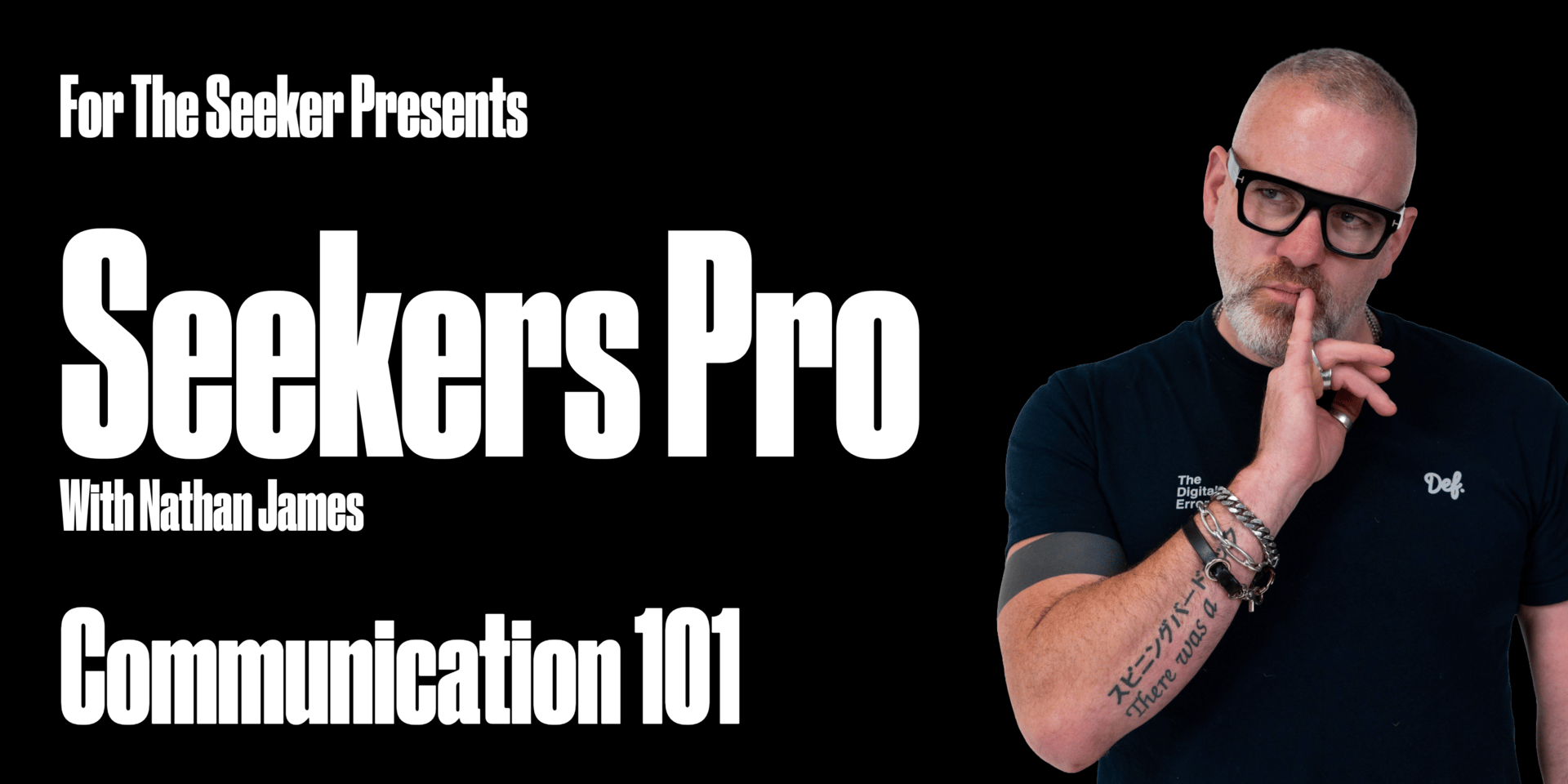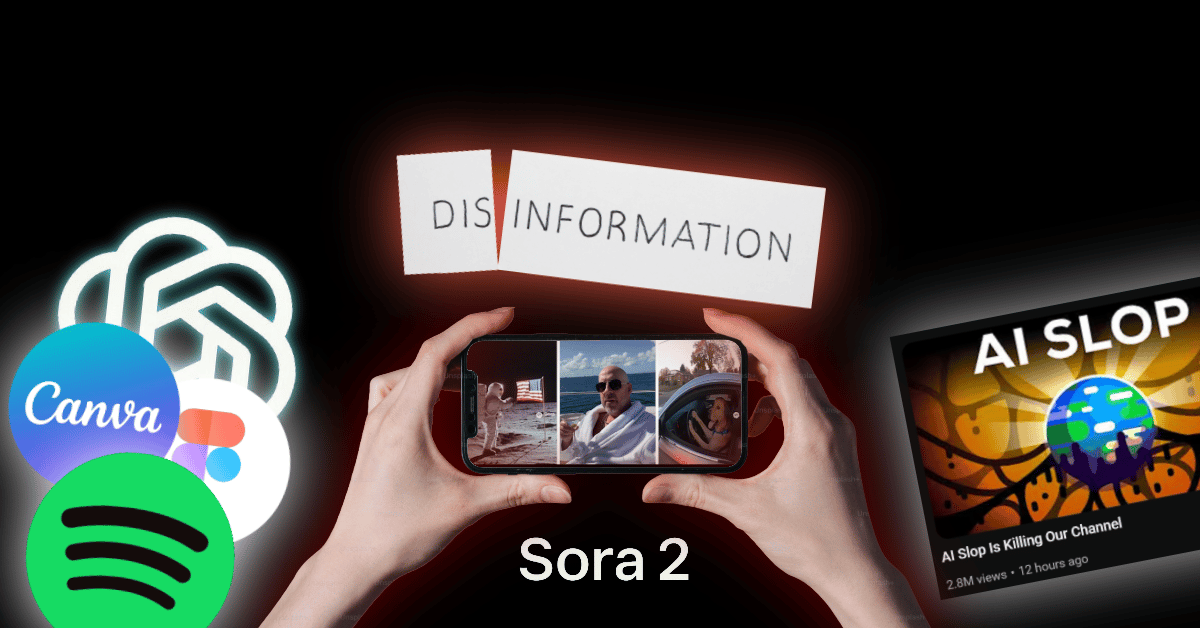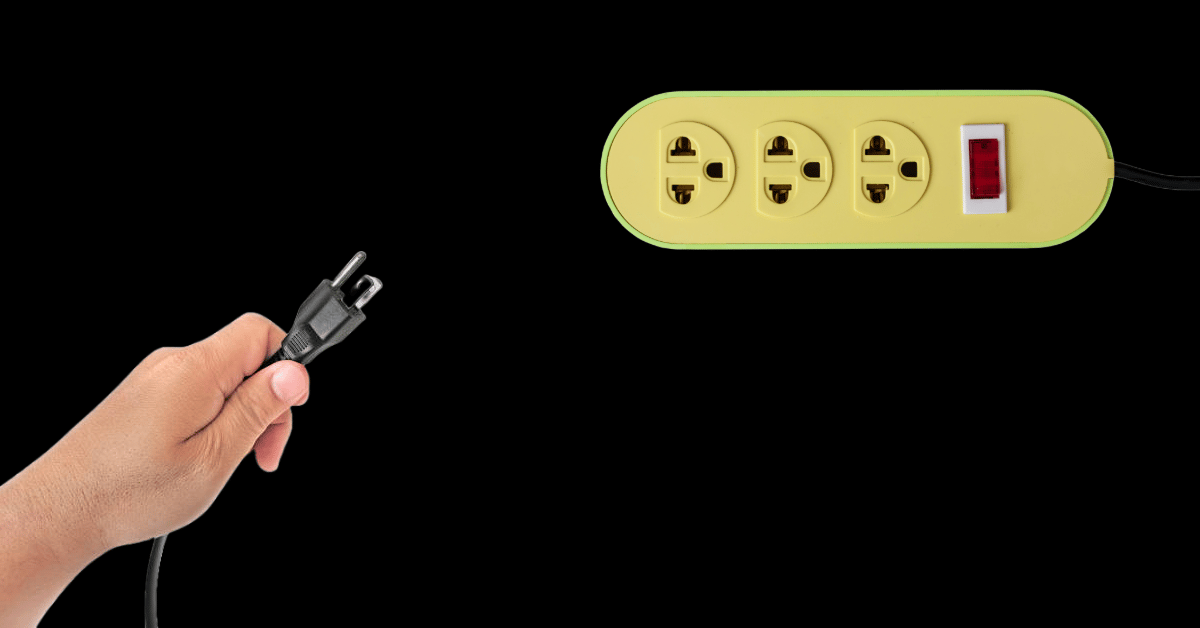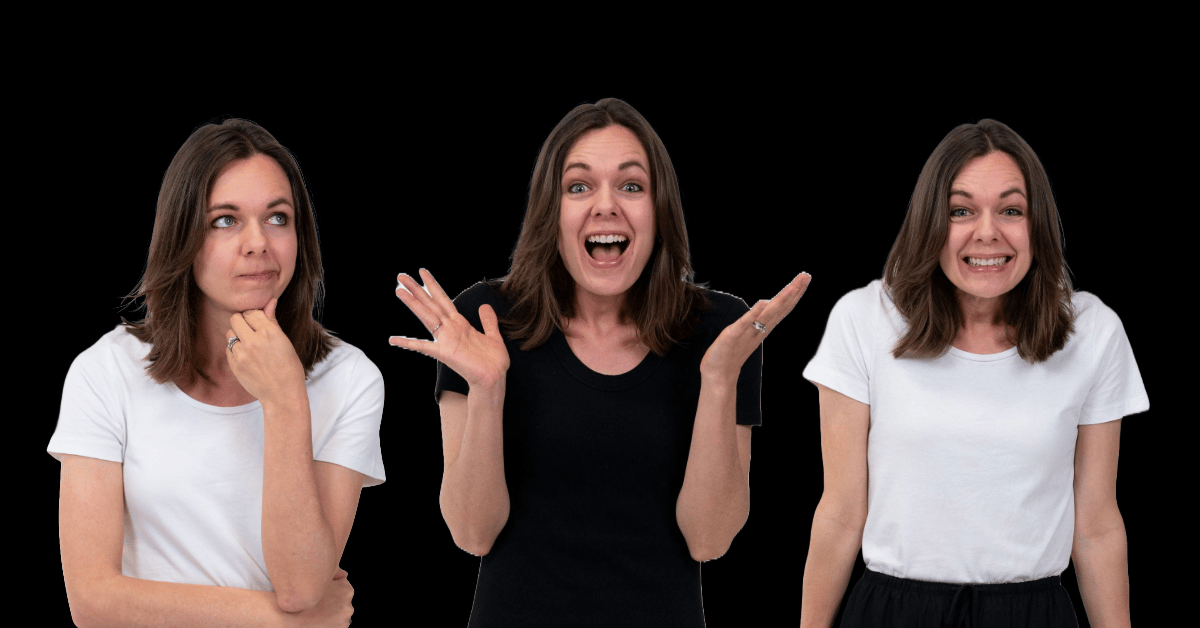
Supreme. Liquid Death. MSCHF. Feastables. All brands that have burst onto the scene and made a huge splash.
And yeah, we all love to be smacked in the face with something that’s so refreshing, so different, that we can’t ignore it. But if you look at longstanding brands like Heinz, Levi’s, Nike, or Chanel, they’re not trying to constantly break the mould. They’re just doing their thing, decade after decade. Being familiar, recognisable, and reliably the same? It’s kinda working for them. Because while every marketing guru is shouting “bE uNiqUe!” there’s a quiet whisper from actual customers saying, “be consistent.”
- Charlotte Ellis, Editor ♡
FREE EVENT in Auckland next Wed👇

You’ve got great ideas. But if you can’t communicate them, what’s the point?
Whether you’re pitching clients, asking for investment, or trying to get your boss to back your pet project, the magic is in knowing how to get your message across clearly. In this session, Nathan James, Creative Director at The Attention Seeker, breaks down what it actually takes to be better at communication.
You’ll learn:
✅How to think sharper
✅How to communicate so people just “get it”
✅How to sell your ideas to your boss, potential clients—anyone
Whether you’re chasing a promotion, eyeing a career change, or wanting to start your own thing, this session is designed to help you think and communicate better.
15 Oct | 5:30-7:30pm | Grey Lynn, Auckland
WHAT’S HAPPENING IN MARKETING TODAY?
Sora app users are f-ed up, AI content could hurt creators & ChatGPT apps just dropped

Today on “Marketing Held Hostage by AI!”
Sora makes disinformation extremely easy and extremely real.
Store robberies, home intrusions, the bombing of city streets! Did they happen? No! Does it matter? Not to OpenAI’s Sora! Apparently, in its first three days, users of the new app created very realistic videos of crazy sh*t happening - ballot fraud, immigration arrests, protests, crimes and attacks on city streets – none of which ever happened.
The app requires a simple text prompt to create footage of almost anything your little heart desires. And it would appear the desires of the public are… kind of f*cked up. To make matters worse, according to 404Media, bypassing Sora 2’s safety features is too easy. The little visual watermark on every video it generates is meant to help people distinguish between AI and reality. But users can simply remove it, using their choice of half a dozen different websites, in just a few minutes. My crystal ball tells me we’re in for a new era of scams and disinformation.
Will AI slop kill the creator economy?
Speaking of which, the introduction of Sora 2 has potentially put a new kind of job in AI’s path of destruction: creators. According to The Wrap, some long-time media watchers believe that due to the “painstaking” process of content creation, AI video feeds, which can be generated with a mere prompt, may hurt the industry.
I think there’s no way AI shite will replace the need for authentic and real human content. But who really knows? Nothing is truly off the table at this point.
ChatGPT apps are live: Here are the first ones you can try.
If you can’t beat ‘em, join ‘em, I guess.
OpenAI has now launched new integrations that plug controls for other apps like Zillow, Canva and even Spotify, from directly inside ChatGPT. That means you could prompt it to make a playlist on Spotify or search for a listing on Zillow without ever leaving the chatbot. Uh okay, that’s actually like, really handy lol.
Other apps include Figma, Expedia, Coursera, and many more are coming soon, including Uber, DoorDash, Instacart, OpenTable, Target, Peloton, Tripadvisor, and AllTrails.
-Sophie Randell, Writer
Hey, do you like YAP?
If so, why not share it with a friend? The more we grow this thing, the more resources we can put into making it awesome for you. Even if every subscriber invites just 1 person to YAP, we’ll meet our growth goal for 2025. So, you in?
DEEP DIVE
Is brand differentiation overrated?

This is one that’s either going to land or get me in trouble lol.
Because “what do you meaaaan Sophie??? We thought the whole idea was to stand out, cut through, you know, break the mould etc.!?” Yes, I am aware of the emphasis we as marketers place on differentiation, and I don’t disagree that in many cases, it's important.
But I love to play devil’s advocate. And I also never encourage partisan, black and white thinking. Because really, everything is grey. And sticking to one narrative is boring.
What got me thinking about this was actually Byron Sharp, the marketing world’s quiet heretic, who made a pretty strong case against the orthodoxy.
His research at the Ehrenberg-Bass Institute flipped the script on me. His take? Brands don’t grow because they’re different; they grow because they’re familiar.
Sharp’s argument, outlined in How Brands Grow, is that distinctiveness, not differentiation, is what drives long-term success. In plain English, it’s less about having a wildly unique product or message and more about being recognisably you across time and touchpoints.
Big, consistent brands win not because they’re radically original, but because they make it easy for people to buy, recall, and trust them.
Which, when you think about it, absolutely checks out. Most people don’t care deeply about toothpaste, coffee, or phone plans. They simply care about not running out, not making a bad decision, and not thinking too hard.
Sharp’s data shows that customers don’t have strong loyalties; they buy what’s available and familiar. The human brain loves shortcuts, and brand distinctiveness is one of them. That’s why Sharp’s mantra: be easy to buy, be easy to remember, feels both radical and obvious.
We spend so much time obsessing over standing out that we forget how comfortingly average most purchase decisions are.
Culturally, we’ve been conditioned to chase novelty: the viral brand launch, the shocking campaign, the “we’re not like other brands” positioning. But differentiation can become an ego trap. It centres you, not the customer. Distinctiveness, on the other hand, is humbler.
It says, “we’ll be here when you need us, and you’ll know us when you see us.”
Sameness gets a bad rap. We often associate it with mediocrity, the all-too-generic ad, the lookalike logo, the risk-averse creative brief. These evoke a massive eyeroll, even for me. Booo. Boringggg. Nextttttt.
But sameness, when handled with intention, is actually a stabiliser in a chaotic market.
And boy, is the market chaotic.
(Cultural theorist Mark Fisher called this era “capitalist realism”, a world where it’s easier to imagine the end of the world than the end of brands. Crazy sh*t right? Well, you’re living it.)
Within that sameness, though, small aesthetic shifts mean everything. Look at Coca-Cola. They've got the same red, same script, same shape, yet each generation finds its own meaning in that familiarity. Or Apple, which has barely changed its tone or design language in two decades, yet still feels modern because the context around it keeps evolving.
It’s no coincidence that two of the most “generic” brands are also two of the most successful on the planet.
Consistency doesn’t kill creativity; it gives it structure. Distinctive assets like logos, colours, slogans, mascots, typefaces act like cultural scaffolding. They let a brand play, adapt, and stay relevant without losing its form.
And tbh, the irony is that in trying to look different, brands often end up all looking the freaking same.
Scroll through any startup landing page and you’ll find the same friendly sans-serif fonts, the same pale gradients, the same “we’re redefining [x industry]” copy. In our rush to differentiate, we’ve created a new kind of sameness—aesthetic conformity that looks like "innovation."
So maybe the real question isn’t “how do we stand out?” but “how do we stand for something consistently, recognisably, and tastefully?”
How to think about it in practice:
If Sharp’s work tells us that distinctiveness matters more than differentiation, what does that mean for us?
Codify your cues. Identify what makes your brand visually and verbally recognisable. Not unique, but yours. Use them everywhere. People should be able to spot you in a feed without seeing your logo.
Commit to repetition. You might get bored before your audience even notices. Familiarity breeds comfort, and comfort drives recall.
Anchor in emotion. Distinctiveness is both visual AND tonal. How does your brand make people feel? Repetition is powerful when it evokes a consistent emotional beat.
Adapt without erasing. Cultural context changes fast. Evolve your execution, not your essence. (Think how McDonald’s experiments with local aesthetics but keeps its golden arches untouchable.)
Don’t confuse chaos with originality. A brand that constantly reinvents itself isn’t bold. It's convoluted and it’s forgettable. Trust that coherence can 100% coexist with creativity.
This is all just a big long hot take. But I feel it’s good to think about things differently sometimes, and maybe brand building isn’t about standing apart at all. It’s about showing up, over and over, in ways that feel both familiar and alive. The goal isn’t to shock or disrupt, it’s to resonate.
In a world where attention is super fragmented and trends expire by Tuesday, a consistent identity can be its own quiet rebellion.
-Sophie Randell, Writer
TREND PLUG
Free to be me

This trend captures that "idc, I'm winning" protagonist feeling.
Y’know, that end-of-a-2000s-coming-of-age-movie moment... main character, slo-mo smile out the car window??... I feel like I'm showing my age here.
Anyway, today's sound comes from Francesca Battistelli’s “Free To Be Me,” specifically the line, “’Cause I got a couple dents in my fender / Got a couple rips in my jeans.”
Creators are using it for those small, triumphant moments... whatever that may look like. It’s even funnier when the text adds a touch of irony or self-awareness!
How you can jump on the trend:
To the sound, film a short selfie or candid clip where you look happy, relieved, or just free. Overlay the text: “How it feels to…” followed by a situation that makes you feel good, liberated, or ironically proud. The more self-aware or satirical, the better.
A few ideas to get you started:
How it feels to finally get crazy viewership for a client’s ad (it got over 20 views)
How it feels to have a productive creative session with my boss (I had no good ideas)
How it feels to have a bad day at work but at least I’m making TikToks instead of working in finance
-Nico Mendoza, Intern
FOR THE GROUP CHAT
😂Yap’s funniest home videos: Are the braincells in the room with us
✨Daily inspo: Why worry about today’s f*ck ups
🎧Soooo tingly: ASMR SOAP
🍝What you should make for dinner tonight: “Titillating” chili garlic noodles
ASK THE EDITOR

I'm an art teacher just starting on Instagram with very few followers. What should I focus on right now? -Eric
Hey Eric,
You could start by creating videos that showcase your talent. Have a look at other artists who have large followings to get some ideas for the type of content that is already performing well in your niche. Then, trying replicating those styles to see what works and doesn't work for you.
Don't be discouraged if you don't see big numbers right away. Just focus on posting consistently, gathering data, and making tweaks based on what you learn. When it comes to content, people appreciate seeing genuine talent or skill. You just have to figure out a format for you to show off yours.
- Charlotte Ellis, Editor ♡
Not going viral yet?
We get it. Creating content that does numbers is harder than it looks. But doing those big numbers is the fastest way to grow your brand. So if you’re tired of throwing sh*t at the wall and seeing what sticks, you’re in luck. Because making our clients go viral is kinda what we do every single day.